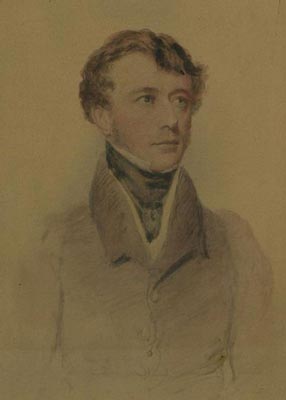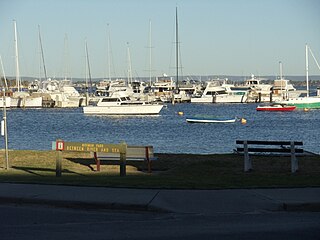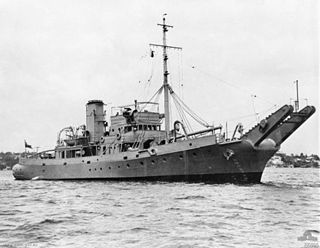
The Swan River is a major river in the southwest of Western Australia. The river runs through the metropolitan area of Perth, Western Australia's capital and largest city.

Fremantle is a port city in Western Australia located at the mouth of the Swan River in the metropolitan area of Perth, the state capital. Fremantle Harbour serves as the port of Perth. The Western Australian vernacular diminutive for Fremantle is Freo.

Rottnest Island, often colloquially referred to as "Rotto", is a 19-square-kilometre (7.3 sq mi) island off the coast of Western Australia, located 18 kilometres (11 mi) west of Fremantle. A sandy, low-lying island formed on a base of aeolianite limestone, Rottnest is an A-class reserve, the highest level of protection afforded to public land.

Garden Island is a narrow island about 10 kilometres (6 mi) long and 1.5 kilometres (0.9 mi) wide, lying about 5 kilometres (3 mi) off the Western Australian coast, to which it is linked by an artificial causeway and bridge.
The Swan River Colony, also known as the Swan River Settlement, or just Swan River, was a British colony established in 1829 on the Swan River, in Western Australia. This initial settlement place on the Swan River was soon named Perth, and it became the capital city of Western Australia.

King George Sound is a sound on the south coast of Western Australia. Named King George the Third's Sound in 1791, it was referred to as King George's Sound from 1805. The name "King George Sound" gradually came into use from about 1934, prompted by new Admiralty charts supporting the intention to eliminate the possessive 's' from geographical names.

North Fremantle is a suburb of Perth, Western Australia, located within the City of Fremantle, a local government area of the state. Its postcode is 6159.

Success Bank is a sandbank to the north of Cockburn Sound, off Fremantle, Western Australia within the limits of the Fremantle Outer Harbour.

Captain Mark John Currie RN played a significant role in the exploration of Australia and the foundation of the Swan River Colony, later named Western Australia.

MV Artania is a cruise ship chartered since 2011 by Phoenix Reisen, a German-based travel agency and cruise ship operator. She was built for Princess Cruises by Wärtsilä at the Helsinki Shipyard, Finland, and was launched on 18 February 1984.

Mosman Park is a western suburb of Perth, Western Australia on the north bank of the Swan River in the local government area of the Town of Mosman Park. It was historically known as Buckland Hill (1889–1909), then Cottesloe Beach (1909–1930) and again Buckland Hill (1930–1937). From 1937 it was named Mosman Park, derived from Mosman in Sydney, the birthplace of Richard Yeldon, a member of the Buckland Hill Road Board. Mosman Park is now considered an affluent suburb, but prior to the 1970s was one of Perth's major industrial centres.
Buckland Hill Reservoir is situated in Mosman Park, Western Australia, 11.5 kilometres (7.1 mi) southwest of the Perth central business district. The covered reservoir is the most westerly in the Perth metropolitan area. The reservoir was originally filled with water from Perth's hill dams and features a water treatment plant. In 1935 Buckland Hill supplied water to the area from Fremantle to Claremont.

Fremantle Harbour is Western Australia's largest and busiest general cargo port and an important historical site. The inner harbour handles a large volume of sea containers, vehicle imports and livestock exports, cruise shipping and naval visits, and operates 24 hours a day. It is located adjacent to the city of Fremantle, in the Perth metropolitan region.

During March 1944, the Allies of World War II rapidly reinforced the military units located in the state of Western Australia to defend against the possibility that Japanese warships would attack the cities of Fremantle and Perth. This redeployment began on 8 March after concerns were raised about the purpose of Japanese warship movements near the Dutch East Indies, and ended on 20 March, after it was concluded that an attack was unlikely.

HMAS Karangi was a Kangaroo-class boom defence vessel operated by the Royal Australian Navy (RAN) during World War II. The third of three ships constructed by the Cockatoo Docks and Engineering Company at Cockatoo Island Dockyard based on the British Bar-class, Karangi was launched on 16 August 1941. After the war, the ship remained in active service with the RAN and played a small but key role in the British nuclear testing program. She was placed in reserve in 1953. In 1955, Karangi was reactivated and served for another two years until May 1957 and was eventually sold for scrap in 1966.

Fremantle submarine base was the utilisation of Fremantle Harbour as a submarine base in World War II. The submarine base was second only to Pearl Harbor in the Pacific theatre, with US, British and Dutch submarines operating from Fremantle during the war. US submarines operating from Fremantle accounted for approximately one quarter of all US submarine patrols in the Pacific.

Leighton Battery at Buckland Hill, Mosman Park, Western Australia, was part of the Coastal defences of Australia during World War II and the Fremantle Fortress, protecting Fremantle Harbour.

Challenger Battery, also referred to as J Gun Battery, is a heritage-listed battery at Entrance Point, Garden Island, Western Australia. Historically, it has is also been known as Garden Battery, Entrance Battery and, finally, Challenger Battery. It was added to the Australian Commonwealth Heritage List on 22 June 2004. It was part of the Coastal defences of Australia during World War II and the Fremantle Fortress, protecting Fremantle Harbour.

Fremantle Fortress was the combined coastal defences protecting the harbour of Fremantle, Western Australia, since the mid-1930s and, predominantly, during World War II. The coastal defences of the Fremantle Fortress stretched along the coastline of Perth from Cape Peron to Swanbourne and also included installations on Garden Island and Rottnest Island. While the first coastal batteries of the future Fremantle Fortress were installed at Arthur Head in 1906, the military installations protecting the harbour were expanded in the 1930s, being eventually dismantled again by 1963.

The Peron Battery, at Cape Peron, was the southernmost of the Fremantle Fortress coastal defence batteries in Western Australia. Also referred to as K Heavy Battery, it was established in January 1943 and, like the Challenger Battery on near-by Garden Island, it was equipped with two mobile 155 mm guns. Additionally, it also operated two 18-pounder guns which were withdrawn once the Collie Secondary Battery became operational on Garden Island. The duty of the main guns was to cover the southern access to Cockburn Sound while the 18-pounder guns protected the a boom net which spanned between Cape Peron and Garden Island. The main battery was withdrawn again in December 1944 but the observation post and one of the Panama mounts of the Peron Battery are still preserved and accessible.



















